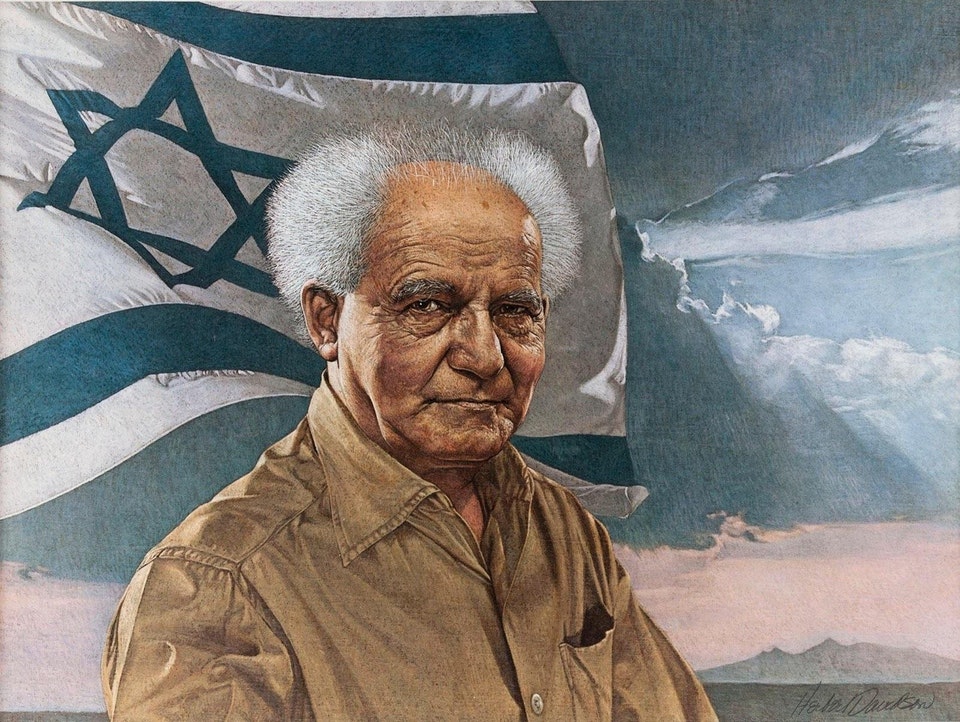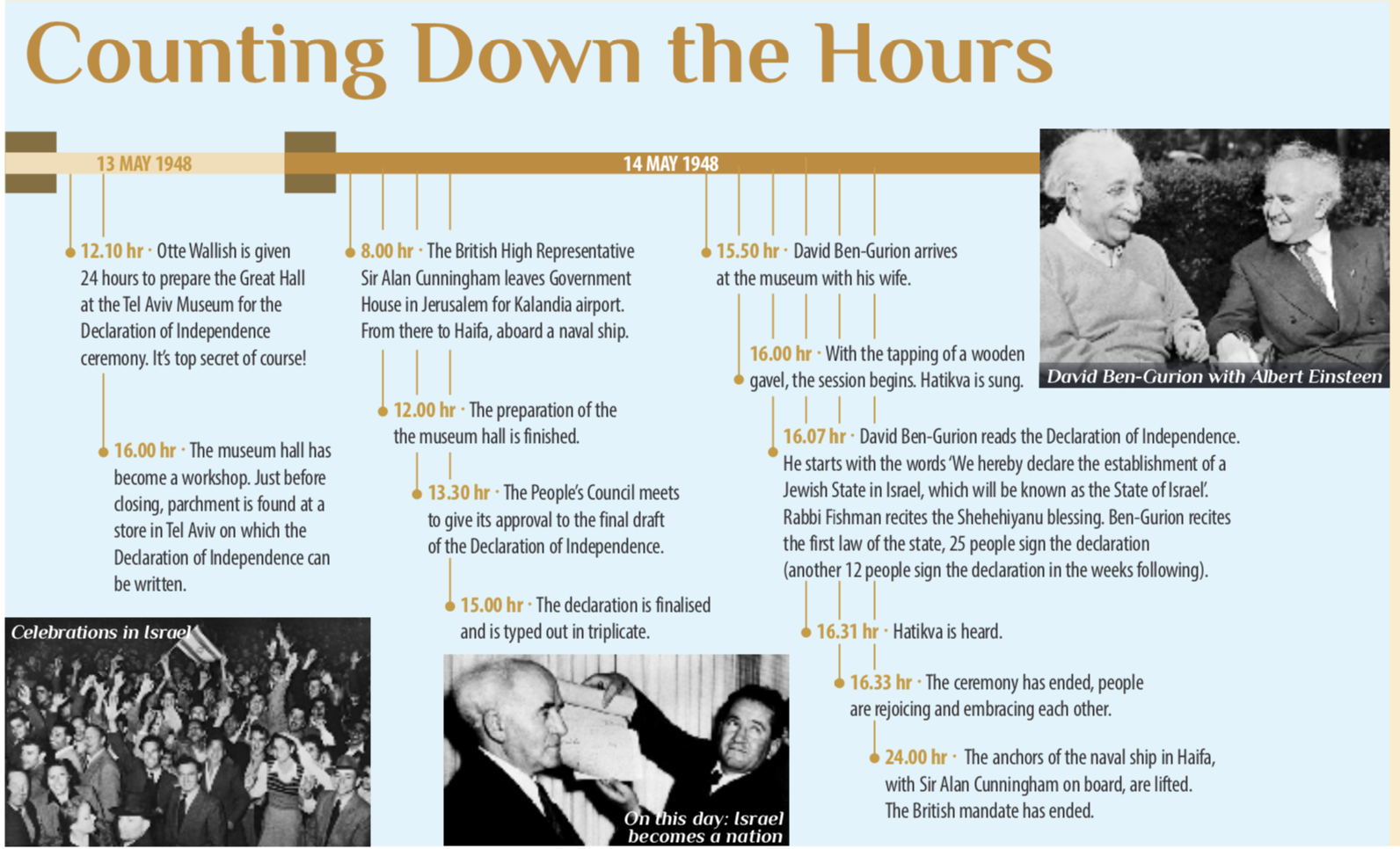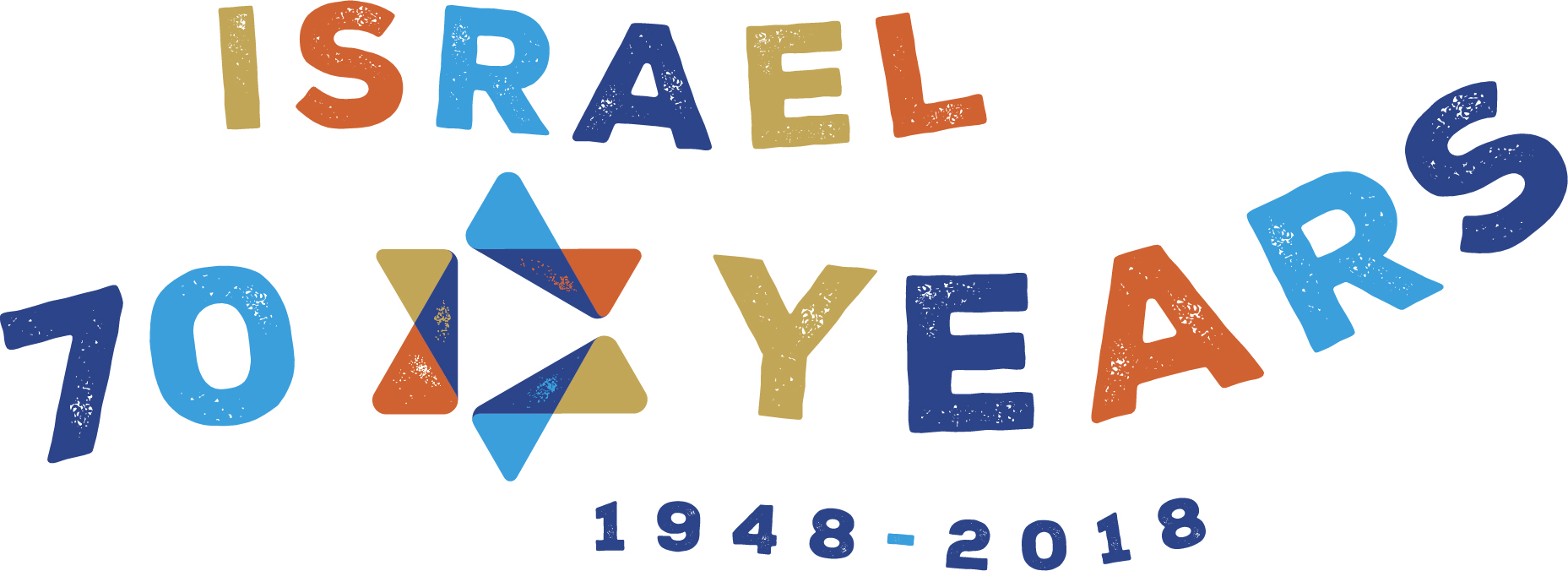Israel – Independent at Last
The desire and longing for a Jewish state is centuries old, long before the state of Israel was established. Jews all over the world dream of, pray continuously, and long intensely for Zion. Some make their own dream come true and return to Jerusalem. A long and exhausting journey precedes this.
It was only in the nineteenth century that there appeared to be a glimmer of hope on the horizon that might bring the return to Israel closer. Enlightened Europe with all its great developments turned out not to offer Jews what they hoped for. Jews were integrating into society a little better, but you could not really call it emancipation. At the same time, ideas such as socialism, nation-states, and racism were emerging, and there was a renewed interest in the Hebrew language which was a dead language up till that time. The recurring pogroms in Eastern Europe and Russia reinforced among Jews the idea to make the longing for Zion practical. Zionism began to grow. More and more thought was given to a place for Jews to live that they could call their own. Theodor Herzl convened his congress in Basel, Switzerland, and published his book Der Judenstaat.
Meanwhile, a return to Zion had begun, involving more than just a few. The flow of people to the Promised Land grew steadily. Yet it was far from obvious that there should be a state of Israel, and that it should be established in the region where Israel also used to live.
At the start of the twentieth century, the ideas of Zionism began to take more shape. Israel was the place where the Jews wanted to establish their homeland, an area that at the time was still part of the Ottoman Empire, and later mandatory Palestine. The first kibbutzim were started. Increasingly large groups of Jews wanted to build their home in Israel. The desire grew to not only live in Israel but also be able to call it their own state. The British composed the Balfour Declaration in which they promised the Jews a home in Palestine. The state of ‘Israel’ appeared to be just around the corner. With the rise of Nazism, that dream seemed to disappear from view. But the Holocaust made the world realise it could no longer ignore the desire of the Jews to have their own state. On 29 November 1947, the United Nations approved the Partition Plan for Palestine, welcomed by the Jewish populations with great joy.
The countdown to the day of declaring their own state had begun (see below). Click to enlarge.
37 Signatories
The signatories of the Declaration of Independence were a colourful group. But they were all leaders of the Jewish community in the land. All, with the exception of one, were born in the diaspora. They represented Zionists, Revisionists and Communists, Sephardi and Yemenis. They all signed the declaration, they all had their own motives.
“I knew that war was what would truly decide the matter. And obviously, if there was a state, it would be easier to win. The wisdom of Israel then was for me the wisdom of war, and the Torah of Israel was the doctrine of war. But I was certain that we would win, because I knew what weapons we had! Even at the time of the ceremony, that was all I was thinking about.” Ben-Gurion
The Birth of Israel in Anecdotes
The final decision to have the ceremony was made only one day in advance: the former mayor’s residence in Tel Aviv would be the place where the Declaration of Independence ceremony would be held, it was the Tel Aviv Museum at the time. And that was a problem; it was a museum with all kinds of paintings on the wall.
On 13 May, Otte Wallish came home around noon after working all night.
He was a graphic designer and advertising agent. There it was: a note asking him to come to the Jewish Agency right away. So that’s what he did. There he was told he had 24 hours to prepare the Great Hall of the Tel Aviv Museum for the Declaration of Independence ceremony. There was no time to waste. Within a few hours the museum hall was a workshop. It was a race against time. The paintings were hidden behind wooden panels, a stage was set up, windows were covered, a carpet was borrowed at a store, chairs from various bars, and a statue of a female torso was strategically hidden. The flags were quickly taken to be washed, and the frame for Herzl’s picture – that also was borrowed – needed repair. But 24 hours later the hall was transformed and ready for a historical moment.
The Driver
Everything was rushed. The ink was barely dry when Zeev Sherf (secretary of the People’s Council) and Dorit Rosen (Sherf’s assistant) hurried the final draft of the Declaration of Independence to the ceremony on Rothschild Boulevard. To not lose any time, Sherf had to flag down a car to take them to the ceremony. They quickly got in the back, saying: “You have a great honour, I’ve got the Declaration of Independence of the state of Israel in hand.”
Three Sections of Parchment
You don’t write the Declaration of Independence of Israel on a notepad of course, not even on expensive stationery. It must be able to stand the test of time. That’s why you use parchment. But you can’t just buy that at any stationery store. Not even at that time. Fortunately, Wallish (he got this task in addition to preparing the ceremony hall) was able to find parchment at a store right before it closed, the day before the ceremony. The parchment wasn’t very large, so he certainly needed three sheets. And the quality? The store clerk didn’t know, and the shop owner had already gone home. Wallish bought the parchment, and he wanted to know the quality of the parchment once he was home, so he immersed it in water and held it in flames. The parchment was approved.
There wasn’t time to inscribe the parchment with the Declaration of Independence before the official meeting. The signatories signed the blank parchment attached to a typed copy of the Declaration. While each person signed, the parchment was held in a nicely strategic manner.
Finishing Touches
In the weeks that followed, the sections of parchment were sewn together. A writer needed to be found as well. The Chief Rabbinate recommended a religious writer, but that did not work out. Wallish eventually did it himself. But not before the font and spelling were thought out. It was written in the Sephardic style – because it is pleasant and easy to read – with a beautifully large letter at the beginning of each paragraph. Next, there had to be a seal, one that didn’t exist yet. Two religious writers designed a seal in the shape of the Star of David. A beautifully made wooden canister completed it. Now there was a legitimate Declaration of Independence signed with the 37 names of the signatories.
Click picture to enlarge.







